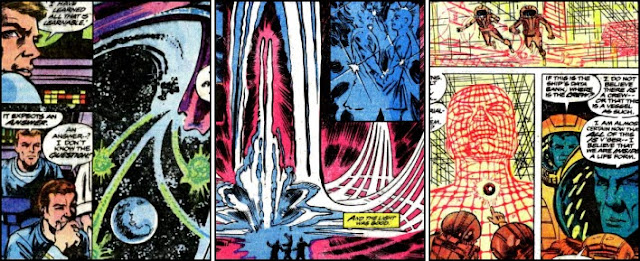 |
| MASTER OF KUNG FU No. 18, June 1974 |
Likewise, the Inkpot Award-winner doesn’t fall into the tempting trap of simply depicting this comic’s lead protagonist as some sort of superhuman fighting machine, who boldly enters his pater’s hidden headquarters in New York, and readily defeats the numerous minions teeming inside. Instead, this book portrays a thoughtful warrior, who realises “the foolishness of [a] frontal assault” against his parent’s “Empire of Evil”, and instead tries to predominantly remain out of sight of his enemies, striking only when he must.
This thoughtful approach to his mission really helps sell Shang-Chi as both a highly-skilled, yet all-too mortal martial artist, who whilst capable of great feats of stealth, such as secreting himself aboard a cargo plane to Florida, is also vulnerable to a well-prepared ambush or fume-filled trap. Such susceptibilities really help sell the sense of suspense needed to make the warrior’s tense investigation into Fu Manchu’s murderous manoeuvrings all the more exciting, and it’s a credit to the America author’s penmanship that the Crime Lord’s latest scheme is actually thwarted by the actions of a disillusioned subordinate, rather than the Master of Kung Fu himself; “The man killed himself, because death was preferable to life for him! And my father made his life so unbearable!”
Just as captivating as this eighteen-page periodical’s plot are the layouts by Paul Gulacy and inker, Al Milgrom. The aforementioned punch-ups between Shang-Chi and the “adherent of Burmese strangler cult” are tremendously well-drawn, especially once Fu Manchu’s cold-blooded assassin has received four drops of a deadly chemical which bestows upon him “super-human speed”. But in addition, the creative collaboration are able to show off their truly imaginative side by creating a sensational splash page showing the hallucinogenic effects of the plant, Mimosa, upon the mind.
 |
| Author: Steve Englehart, Artist: Paul Gulacy, and Inking: Al Milgrom |








































